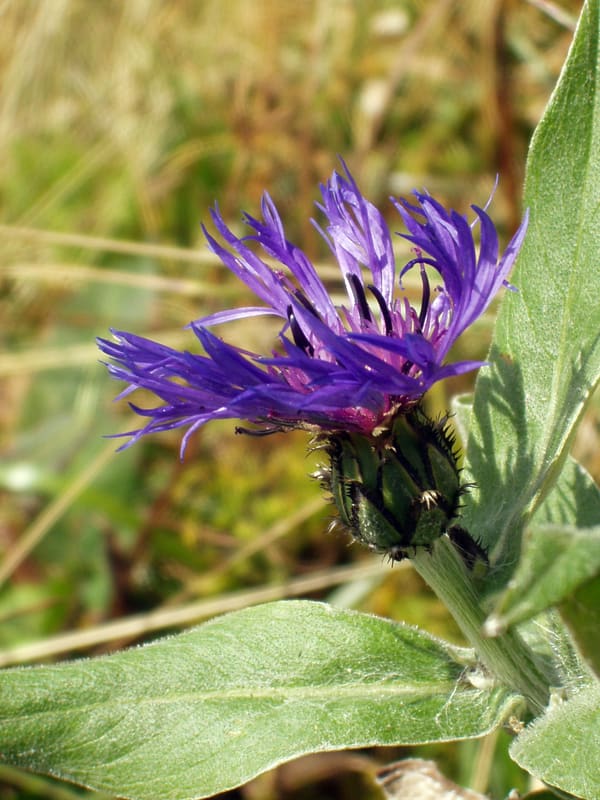Perennial Cornflower, Mountain Cornflower, Bachelor's Button, Montane Knapweed
Centaurea montana

🌿 Morphology
🌞 Growing conditions
🌍 Origin and family
🌾 Uses
Warning: Despite the care taken in writing this sheet, it is essential to cross-reference sources before using or consuming any plant. When in doubt, consult a qualified professional
Permaculture uses
Edible flowers can be used in salads or as a garnish. The plant attracts pollinators and beneficial insects, making it a good addition to a wildlife garden or to increase biodiversity in a permaculture system. It can be used as a ground cover in certain areas, helping to suppress weeds.
Permapeople description
Centaurea montana, also known as the mountain cornflower, is a perennial flowering plant native to Europe. It features lance-shaped, grayish-green leaves and showy, fringed blue, lavender, or white flowers. The plant typically grows to a height of 1 to 2 feet and spreads through rhizomes. It thrives in well-drained soil and full sun to partial shade.
Botanical description
Centaurea montana is a herbaceous perennial plant in the Asteraceae family. It typically grows to a height of 1-2 feet. The plant has lance-shaped, grayish-green leaves. It produces solitary, thistle-like flowerheads that are typically a deep blue or purple, with a darker center disc. There are also cultivars with white, pink, or burgundy flowers. The plant spreads by rhizomes and seeds.
Companion planting
Generally a good companion plant due to its pollinator-attracting properties. Avoid planting near aggressive spreaders that might outcompete it. Beneficial associations with herbs like rosemary and thyme.
Propagation methods
Seed sowing in spring or fall, division of established clumps in spring or fall, root cuttings in winter.
History and traditions
Historically, Centaurea species have been used in traditional medicine for wound healing and as a diuretic. The flowers were also used for decorative purposes and in some cultures, the roots were used to treat digestive issues. The plant is often associated with open meadows and mountainous regions in Europe.
Usage calendar
Flowering: May to August. Planting: Spring or Fall. Pruning: After flowering to encourage a second bloom or to remove spent flower heads.
